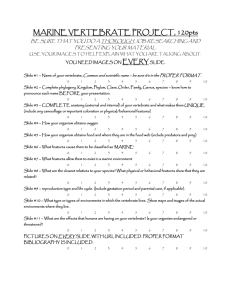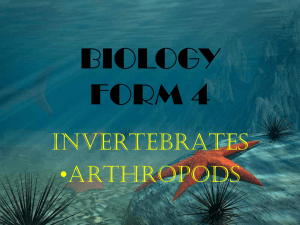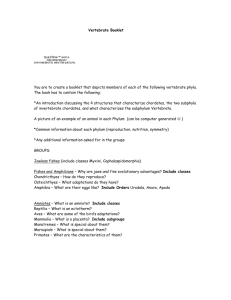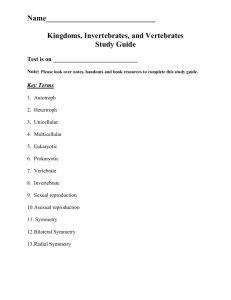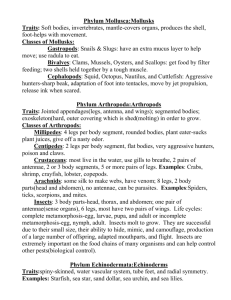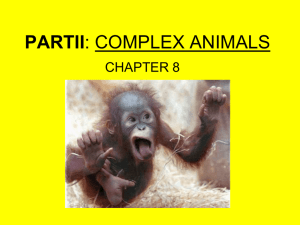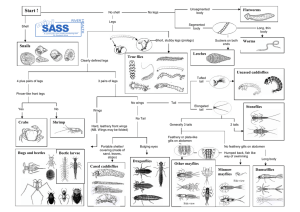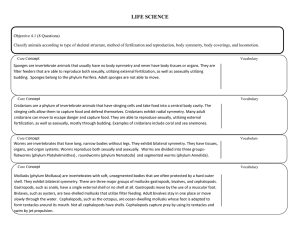File
advertisement
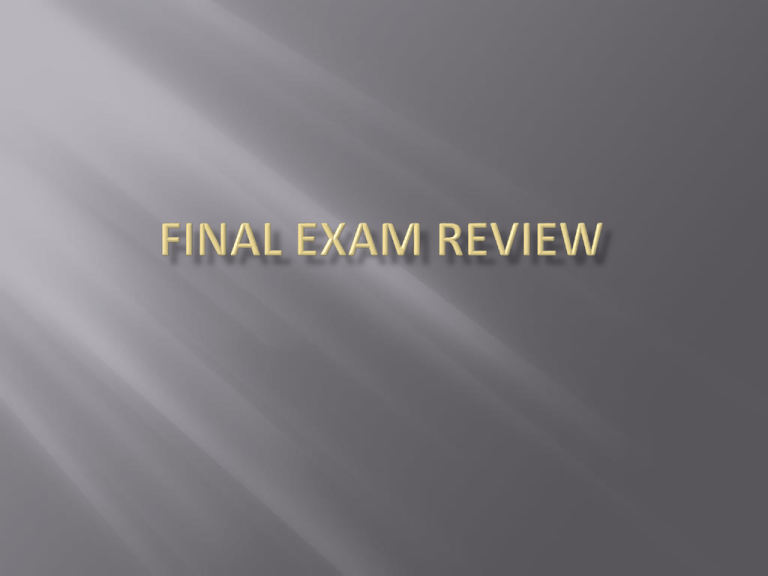
The amount of time a female is pregnant (the time between fertilization and birth) The large muscle that allows mammals to breathe Monotremes Duck billed platypus Echidna gills Lungs and skin Lizards have legs Chordata A warm blooded vertebrate; their body temperature does not change much, even when the temperature of the environment changes A jawless fish The larvae of a frog or toad An exoskeleton Two legs per body segment Herbivores Two body segments Eight legs No antennae or wings Six legs Three body segments Can have wings Helps them hide to avoid predators Helps a gastropod scrape food from a surface gastropods water An organism that eats waste and dead organisms Multicellular Heterotrophic (have to find food) Almost all reproduce sexually Move at some point in their life Have specialized cells A vertebrate When one line can be drawn to divide an animal into halves that are mirror images Roundworms (Phylum Nematoda) Flatworms (Phylum Platyhelminthes) Segmented worms (Phylum Annelida) An organism that grows on or in another organism Radial symmetry A balanced arrangement of parts The cell joining of sperm and egg Mammals and birds One or none Radial symmetry Invertebrates Humans Monkeys apes cartilage Swim bladder salamander Spiders Mites ticks omnivore An animal without a backbone radial




